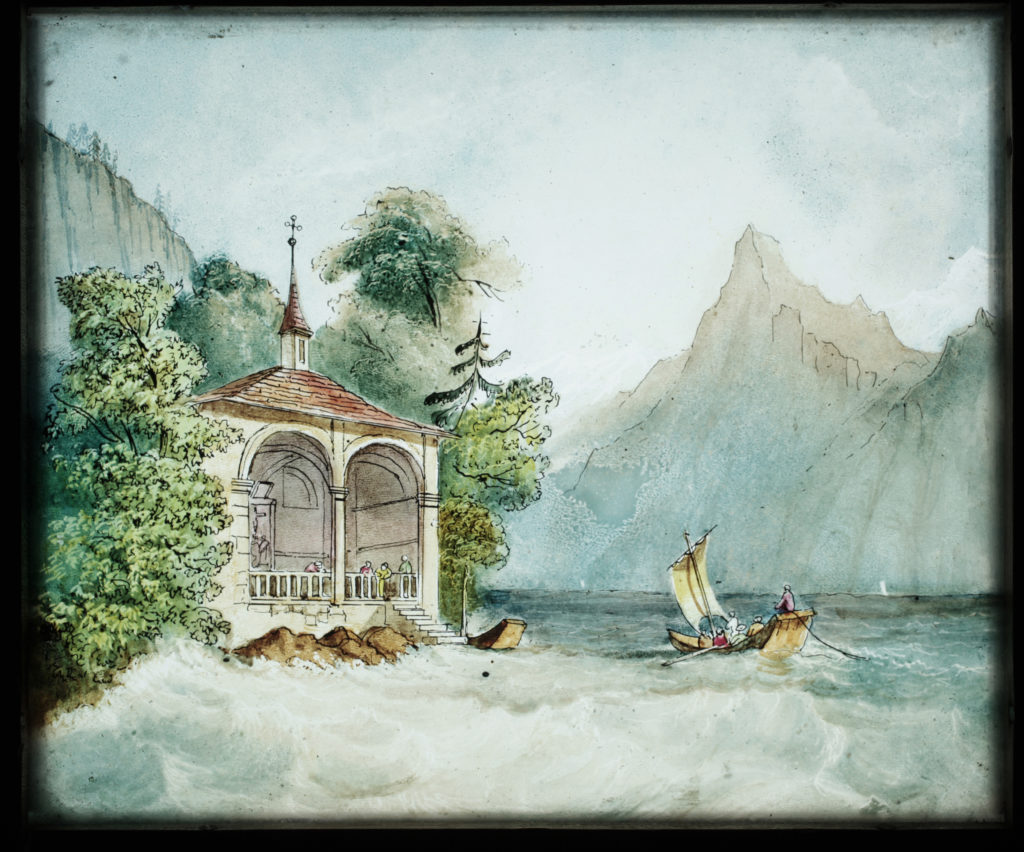Preparation of Lantern Plates
The first glass plates were hand-painted, the subject being applied by transfer from a paper pattern. One plate included several subjects, or a panoramic view. Later, the line drawing was applied mechanically to the plate then coloured by hand. The artists generally remained anonymous, with the exception of Desch, established in Paris at the end of the XIXth century.
From the end of the XIXth century, plates became mass-produced, at first in Germany. Chromolithographs printed in transparent colours were applied to the glass plate and it became possible to buy subjects in transfer kit form, which one could apply to the glass plates oneself.
The subjects were very varied: landscapes, monuments, nature, mythological themes, historical or even religious, fairy tales and legends, comic strips, or children’s series… Some plates were fitted with mechanisms enabling them to be animated, such as a crank or a rod, which turned a second concentric plate, or a cord, which pulled another element across in front of the background or transformed the subject.


